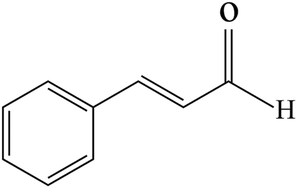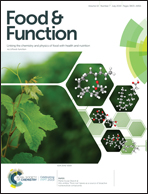Cinnamaldehyde attenuates atherosclerosis via targeting the IκB/NF-κB signaling pathway in high fat diet-induced ApoE−/− mice
Abstract
Cinnamaldehyde is a flavor isolated from the bark of Cinnamomum cassia Presl and exerts anti-inflammation effects in various diseases. In our study, we investigated the protective effects and the potential mechanism of cinnamaldehyde on atherosclerosis (AS) by using a high fat diet (HFD)-fed ApoE−/− atherosclerotic mouse model. Here, we found that the serum LDL-C, TG and TC levels were elevated and the HDL-C level was decreased in HFD-fed ApoE−/− mice. Cinnamaldehyde treatment significantly decreased inflammatory cytokine (TNF-α, IL-6, NO and MCP-1) overproduction and the serum lipid level. Meanwhile, cinnamaldehyde increased the HDL-C level and down-regulated the activity of lipid peroxidation product MDA in serum. Moreover, cinnamaldehyde reduced the atherosclerotic plaque area in ApoE−/− mice. Furthermore, cinnamaldehyde reduced matrix metalloproteinase-2 (MMP-2) expression and attenuated the high phosphorylation level of IκBα and p65 NF-κB. Overall, our study indicates that cinnamaldehyde may achieve the anti-atherosclerotic effect via the IκB/NF-κB signaling pathway.



 Please wait while we load your content...
Please wait while we load your content...